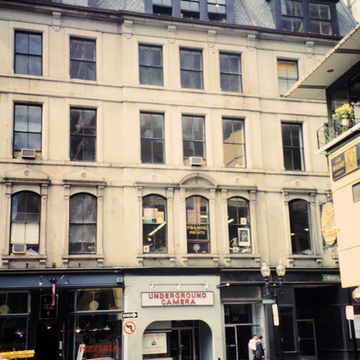Granite-faced commercial buildings such as these were erected to house a variety of shops and businesses that once lined the principal thoroughfares of Boston. Improved access to granite quarries in the 1830s and 1840s made the stone economical for widespread use. The stone proved to be particularly popular in the second quarter of the nineteenth century, as it was ideally suited for the Greek Revival style where relatively little ornamentation was necessary to convey classical motifs. This rare surviving example of the once common granite-faced commercial block features a trabeated facade with pilasters supporting an entablature. As originally built the storefronts would also have had granite piers and lintels. Polygonal dormers light the attic space under the gable roof.
The Methodist Book Repository, Methodist Theological School, and the newspaper Zion's Herald were located in the Wesleyan Building along with various income-producing businesses. The building is an important surviving example of commercial architecture in Boston prior to the 1872 fire. Originally there was cast-iron cresting along the top of the mansard. Hammatt Billings was a highly respected designer and book illustrator in the mid-nineteenth century. His brother Joseph provided the practical expertise.


